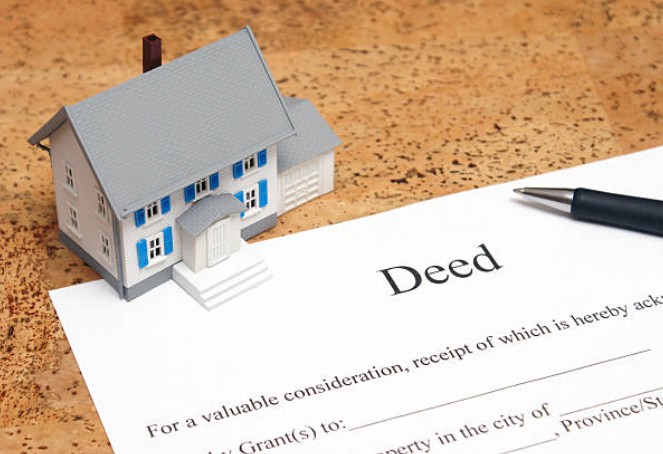When it comes to property ownership in the UK, understanding the legalities involved is essential for managing assets effectively. One of the most crucial yet often overlooked documents is the Deed of Variation on a Freehold Property. This legal document can have significant implications for how a property is used, maintained, and transferred. Whether you are a homeowner, a property investor, or involved in property transactions, understanding what a Deed of Variation is and why it matters can help you make informed decisions about your property.
In this blog post, we will explain what a Deed of Variation is, why it’s important, and how it can affect your freehold property. We’ll break down its relevance, the process of creating one, and the potential risks involved.
What Is a Deed of Variation on a Freehold Property?

A Deed of Variation for a freehold property is an official legal instrument that allows changes to be made to the terms of an existing property agreement or deed. These variations typically apply to certain aspects of the property or land’s legal framework, including the terms governing use, rights of access, and easements. Unlike a regular contract, which may require new terms to be established, a Deed of Variation changes or adds to an existing agreement while leaving the remainder intact.
In the context of freehold properties, a Deed of Variation can be used to amend:
- Covenants: These are legally binding promises that restrict or specify certain uses or actions on the property, such as limitations on building, maintenance, or land use.
- Access Rights: Modifications might be needed when new rights-of-way or easements are required or when existing ones need to be adjusted.
- Land Use Agreements: In cases where the original land use terms need updating or expanding to reflect new planning or zoning rules, a Deed of Variation allows the property owner to formalize the changes.
- Lease Terms (for leasehold properties): While this article primarily focuses on freehold properties, a Deed of Variation can also be used in leasehold property arrangements to amend rent levels, Duration of the rental agreement, or the entitlements granted to the renter.
When Do You Need a Deed of Variation?
There are several scenarios where you might need to initiate a Deed of Variation:
- Modification of Property Rights: For instance, if you want to change the access rights or rights of way on a shared property, this document is essential.
- Changing Covenants: If there is a covenant that prevents you from performing a particular action (like extending a building), a Deed of Variation can lift or modify that covenant.
- Succession Planning: In cases of inheritance or property transfer, especially in complex situations involving multiple owners, a Deed of Variation can adjust the terms of the freehold to ensure it aligns with the new ownership.
- Dispute Resolution: If there is a legal dispute over property boundaries, access, or usage, this document can resolve issues by making amendments that satisfy all involved parties.
Why Does a Deed of Variation Matter for Freehold Property Owners?

The Deed of Variation on a Freehold Property plays a crucial role for property owners in various situations. The following are the primary reasons why it matters:
1. Flexibility in Property Use
Over time, the needs and intentions of property owners can change. Whether you wish to expand your property, change its use, or alter how it is accessed, a Deed of Variation can provide the flexibility needed to make those changes. For example:
- You may want to change the terms related to building on the land, such as adding an extension, building a garden wall, or erecting a new structure.
- If you need to alter the way shared land is used (such as a communal garden or driveway), the Deed of Variation can amend those terms without needing to completely rewrite the original deed.
2. Dispute Resolution and Clarification
Disagreements over property rights can arise, especially when it comes to shared land or properties with complex covenants. A Deed of Variation can serve as a mechanism for resolving these disputes by modifying or clarifying the existing agreements. For example, if there’s a disagreement over who is responsible for maintaining certain parts of the property (like a shared boundary fence), a Deed of Variation can clearly assign responsibility.
3. Adapting to Changing Circumstances
Circumstances change over time, whether it’s new planning laws, shifts in property market trends, or personal preferences. A Deed of Variation allows you to keep your property arrangements up to date with current laws and personal circumstances. For instance, if you wish to sell part of your land or if you want to merge two adjacent properties, a Deed of Variation can help make those changes official.
4. Improving Property Value
Making improvements or amendments through a Deed of Variation can lead to an increase in property value. For example:
- If the Deed of Variation allows for additional building space or removes restrictive covenants, it can open up new development opportunities and, thus, increase the property’s value.
- Likewise, clarifying or resolving legal disputes via this document can make the property more attractive to future buyers, as there would be fewer legal uncertainties.
How Does a Deed of Variation Affect Property Transactions?

Dealing with property sales or purchases can be complicated, as they typically require handling a variety of legal paperwork. A Deed of Variation can play a pivotal role in ensuring smooth property sales or transfers. However, its impact on a transaction can depend on the changes made:
Positive Impact on Transactions:
- Clarity: By resolving disputes or clarifying the terms of property rights, the Deed of Variation makes the property more straightforward for future buyers, reducing the likelihood of future legal issues.
- Flexibility for Buyers: A buyer may find a property more appealing if the Deed of Variation has updated the legal terms to suit modern needs or resolved previously restrictive covenants.
Negative Impact on Transactions:
- Uncertainty: If a Deed of Variation introduces overly complex or unclear changes, it could create uncertainty for potential buyers. Buyers may be hesitant to move forward if they are unsure about the terms or if it raises red flags about the property’s legal standing.
- Potential for Disputes: If the Deed of Variation is not agreed upon by all parties involved (e.g., neighbouring landowners), it could lead to further disputes, complicating the property transaction process.
Key Elements of a Deed of Variation
A Deed of Variation generally outlines the following key components.
- Parties Involved: The full names and addresses of the property owner(s) and any other involved parties, such as leaseholders or other beneficiaries.
- Property Description: A clear and detailed description of the property, including its boundaries and any unique identifiers such as land registry references.
- Variation Clauses: This is the core of the deed, detailing what changes are being made to the original deed or agreement. These changes must be unambiguous.
- Signatures and Witnesses: The document must be signed by all parties involved and witnessed to make it legally binding.
- Registration: In some cases, the Deed of Variation needs to be registered with the Land Registry for it to be effective and legally enforceable.
Possible Drawbacks When Opting for a Deed of Variation
While a Deed of Variation is useful, there are risks to be aware of:
- Legal Complexities: The legal process can be complicated, especially if there are multiple parties involved. Errors in drafting or disagreements over the terms could lead to costly legal battles.
- Market Perception: If the changes made through the Deed of Variation are not carefully managed, they might negatively affect how future buyers perceive the property.
- Costs: The process of drafting a Deed of Variation involves legal fees and potentially registration costs, depending on the complexity of the changes.
Conclusion: The Importance of Understanding a Deed of Variation on a Freehold Property
A Deed of Variation on a Freehold Property is a powerful tool for property owners in the UK who need to make adjustments to their property agreements. Whether it’s for resolving disputes, updating terms, or making the property more flexible for future use, understanding how to use this document properly can save you time, money, and potential legal headaches.
Always consult a legal expert before making any changes to your property’s deed, as a well-drafted Deed of Variation can protect your interests and ensure your property’s future is legally sound.
Table: Key Differences Between Standard Freehold Deeds and Deeds of Variation
| Feature | Standard Freehold Deed | Deed of Variation |
| Purpose | Establishes property ownershipAlter | existing terms |
| Flexibility | Fixed terms | Modifies terms as needed |
| Legal Process | Initial legal process | Legal document amendment |
| Impact on Property | Defines original terms | Can modify use/restrictions |
Frequently Asked Questions (FAQs):
Can I modify any terms of my freehold property with a Deed of Variation?
No, the terms you can modify depend on the specific deed or contract associated with the property. Not all clauses may be eligible for change, especially if they are statutory or established by local planning laws.
Is the Deed of Variation the same as a deed of assignment?
No, a deed of assignment transfers rights from one party to another, while a Deed of Variation modifies the terms of an existing agreement without transferring ownership.
How long does it take to create a Deed of Variation?
Creating a Deed of Variation can take anywhere from a few weeks to a couple of months, depending on the complexity of the changes and the number of parties involved.
Will a Deed of Variation affect my property taxes?
In some cases, changes made through a Deed of Variation, such as altering property use or structure, could affect your property taxes. It’s advisable to consult with a tax professional before proceeding.






